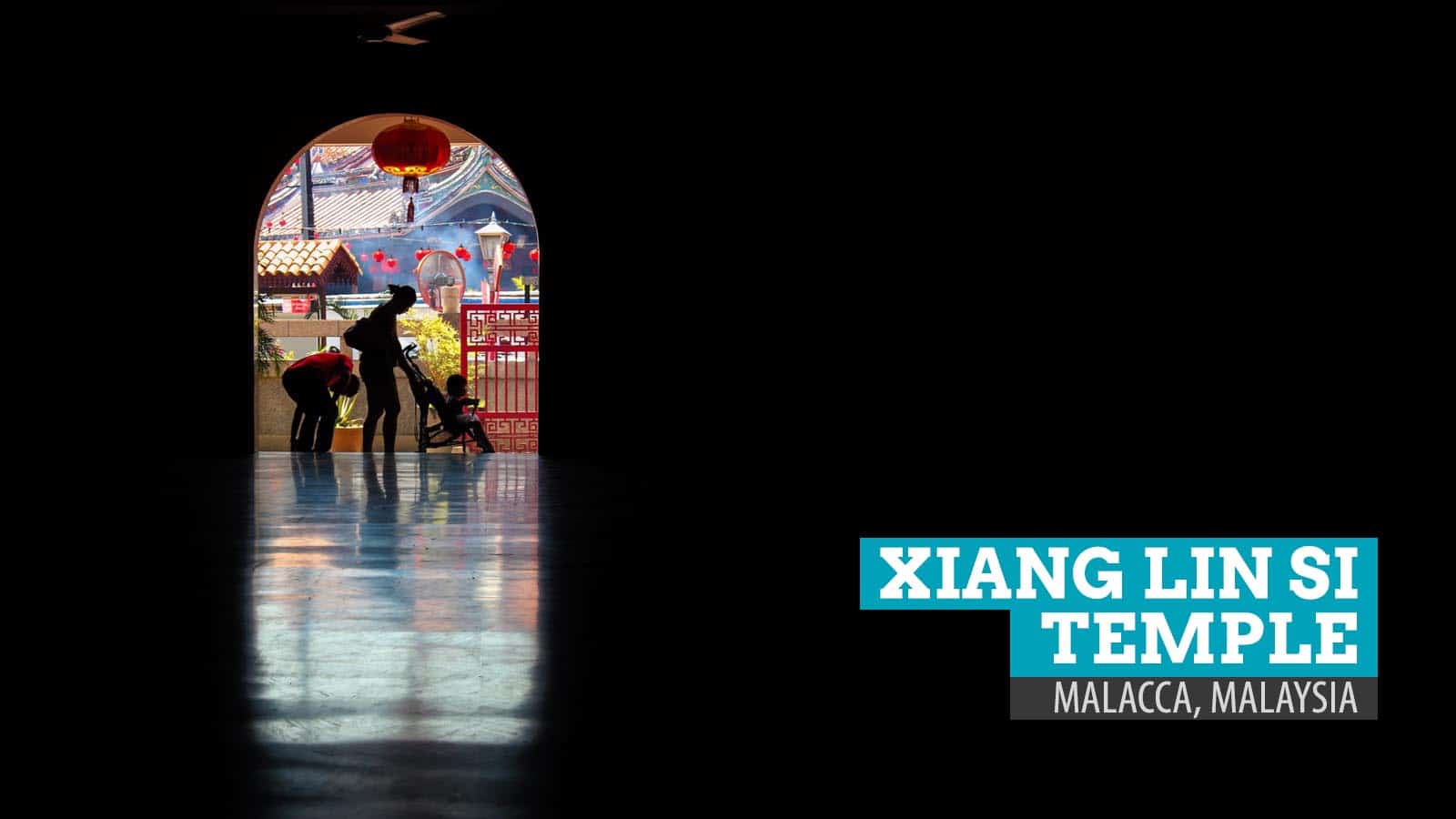I was the only tourist at the time. There were some believers standing by the entrance, holding lighted joss sticks, and whispering words of prayer. All of them were outside. And then it hit me: Are tourists even allowed to enter this temple?
Fortunately, the answer was Yes!
I was at Xiang Lin Si Temple along Harmony Street at the heart of Malacca Chinatown. It puzzled me why I was the only one inside the temple at the time. I approached a staff member working at the temple and asked whether it was okay to go around and he said ‘No problem.’ Whew! I thought I unintentionally trespassed!
Whenever I enter a place of worship, I tend to feel uncomfortable. Whether it’s a mosque, a church, or a temple, my first reaction is always the same — worried that I might be doing something wrong. I always feel like I might be doing something inappropriate, disrespectful, or offensive inside a place that is considered by believers sacred. Questions always start popping up in my head the moment my feet make their way past the gate of any religious site. Should I take off my shoes? May I take pictures inside? Am I even allowed to enter in the first place?
I guess I just always want to give the place the respect that its devotees give it. And perhaps, because there’s so much that i don’t know about other religions.
The Xiang Lin Si Temple
Xiang Lin Si Temple isn’t strict at all. Anyone can enter and anyone can take photos of any part of the temple. There was even a sign when we visited telling guests to NOT take their shoes off when entering. The only thing they ask you to do is to just zip it and keep quiet. After all, it is a place for prayer, meditation, and peace.
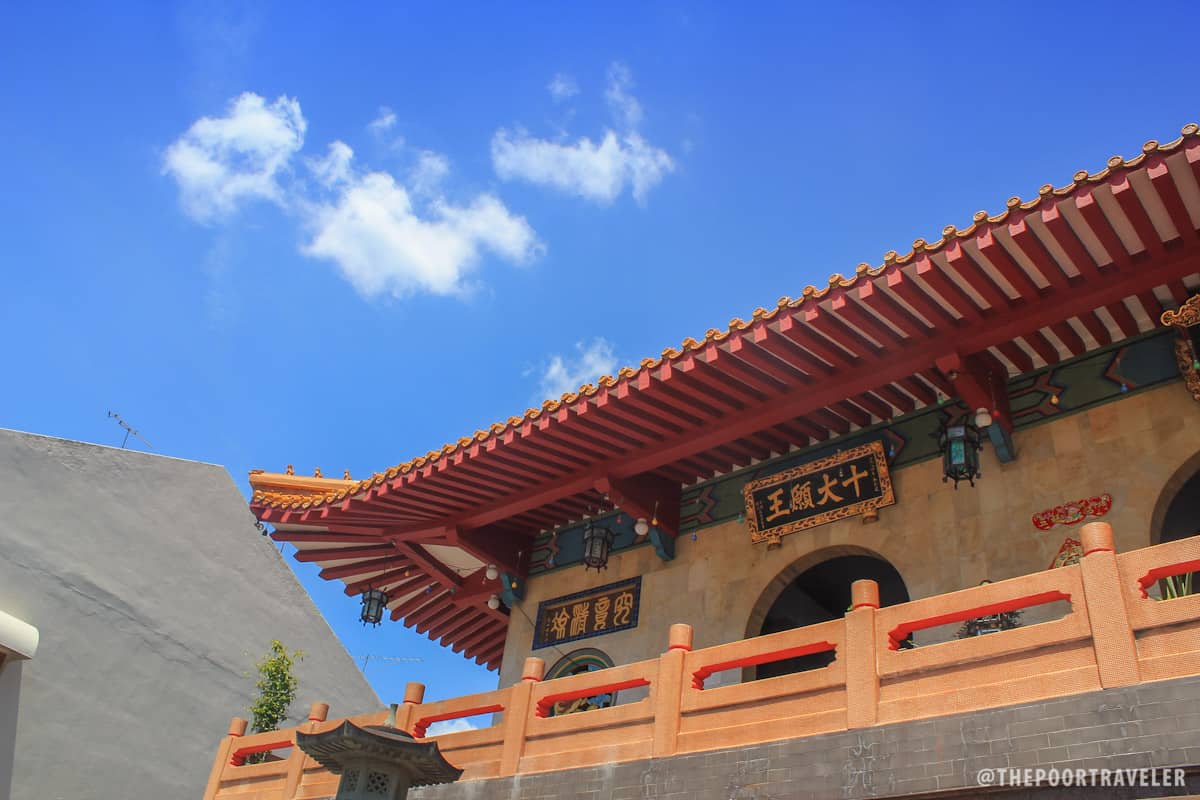
While it bears a number of similarities to its neighbor Cheng Hoon Teng Temple just across the street, it is also a stark contrast. For starters, the 400-year old Cheng Hoon Teng Temple is said to be the oldest Chinese Temple in Malaysia, while Xiang Lin Si is relatively new and modern. Cheng Hoon Teng upholds the principles of all three major Chinese religions equally — Taoism, Confucianism, and Buddhism — while Xiang Lin Si seems to me as primarily (if not purely) a Buddhist Temple. It is also bigger, with two stories, and is less popular and less crowded. Moreover, it is much less decorated and much simpler.
I had been to a few Buddhist temples before and, while it is probably the biggest structure along Harmony Street, it is still small compared to other temples in other parts of the world. Yes, there isn’t anything fancy about it, but my visit here was the first time that I had a grasp of the Buddhist religion. Because there weren’t much decorations (and positive overwhelming distractions) my focus was fixed on the important features of the place.
Inside Xiang Lin Si Temple
Xiang Lin Si Temple has two stories with three arch doorways on each level. Before the center door on the ground floor are three waist-level censers where believers put lit joss sticks on.
In other Buddhist Temples, there are a few other rooms that house Maitreya Buddha and other deities such as the Four Heavenly Kings and the Eighteen Lohans (aka the Eighteen Arhats). But because Xiang Lin Si is small, no such rooms exist. Instead, they are all kept in one room. Once you make it past the front door, you’ll already find yourself in the Buddha Room. The first to greet visitors is a small smiling statue of Mi-lo Fwo (the Chinese Maitreya, the Future Buddha), sitting on a short altar, which lies parallel to and faces the front door.
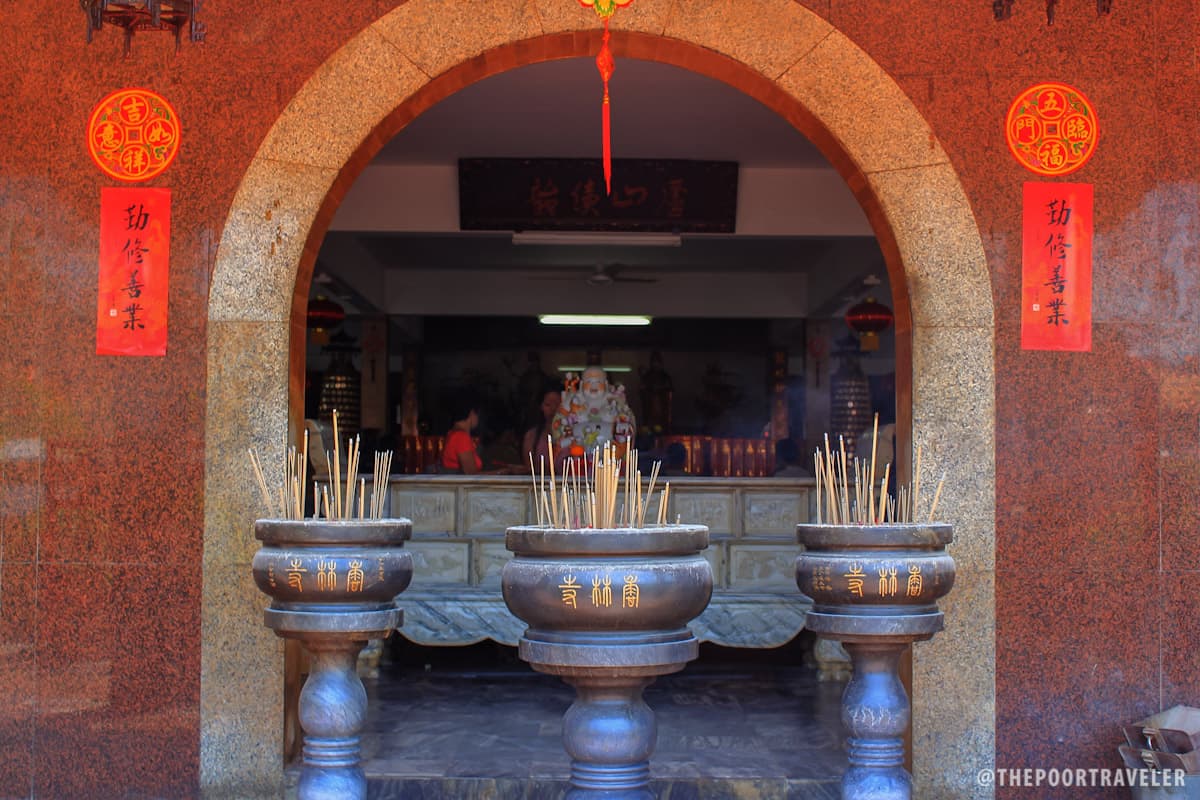
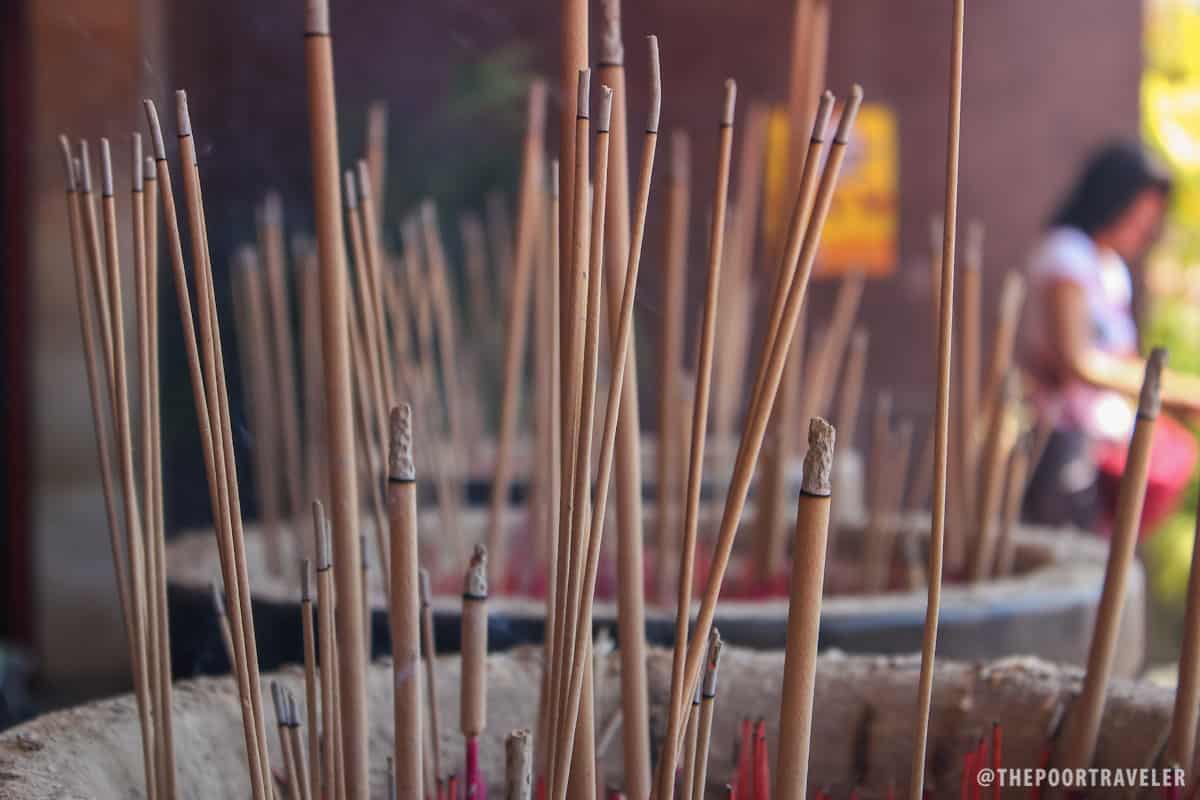
The Maitreya is sometimes called The Benevolent One or The One Who Possesses Loving Kindness. Also known as the Buddha of the Future, he is believed to have been reincarnated a number of times in many Buddhist countries. He is revered for his willingness to help those who come to him. He is also commonly referred to as Mi-lo-Fwo, usually depicted as fat, always smiling, and surrounded by happy children.
At Xiang Lin Si Temple, the Eighteen Lohans of Buddhism are lined up on both sides of the Buddha Hall, nine on each side, leading to a much smaller statue of Gautama Buddha in the center. I stood before the statue and found myself surrounded by the Lohans. I had seen two sets of the Eighteen Lohans at the Cheng Hoon Teng Temple just across the street, but I still had no knowledge whatsoever of who they are and their importance in Buddhism.
Apparently, the Eighteen Lohans (also called the Eighteen Arhats) are those who followed the Eightfold Path and have reached what they call “The Other Shore.” They no longer have the asavas or the “taints” — sensuality, ignorance, earthly existence, and wrong views — and are no longer subject to karma or more reincarnation. Arhats are known for their courage, wisdom, and ability to ward off evil. Originally, there were only 16 arhats but two were added during the Tang Dynasty. Each of them are depicted differently.
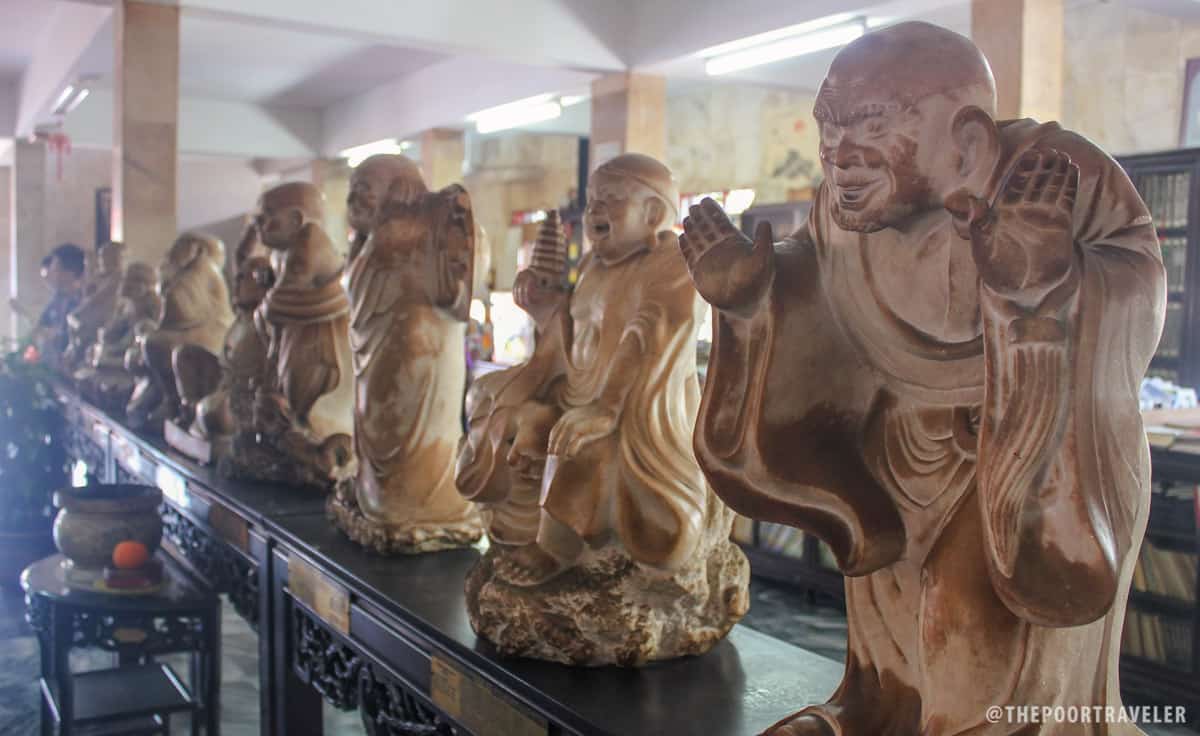
At the center of the hall, of course, is the altar to Gautama Buddha, surrounded by censers cradling joss sticks, and other offerings such as fruits, bread, and flowers. The statue at the temple is white. (I failed to learn what it was made of.)
Behind the Buddha is a statue of what looks like Guan Yin, the Goddess of Mercy. In bigger temples, she is kept in a separate room from the Buddha but I guess they don’t have much space here. Guan Yin is also venerated in Taoism.
Aside from the statue of Guan Yin, there are five massive sculptures but I am not sure who they are. (I was left alone in the hall again and I had no one to ask.) At first I assumed that they were the Four Heavenly Kings, which are always present in Buddhist Temples. But like I said, there are five of them so my first assumption must be wrong.
The left most figure, however, looked like Guan Yu (said to be the personification of Sangharama, a guardian of the temple. If that’s true, then I suppose the one on the far right is Wei Tuo (Skandra), a devoted guardian of Buddhist monasteries and teachings, but again I’m not sure. If that’s the case, then who are the three others? I hoped to find answers when I was there but I could not really ask anyone because they were all deep in their prayer.
And oh, there were so many books about Buddhism inside, too!
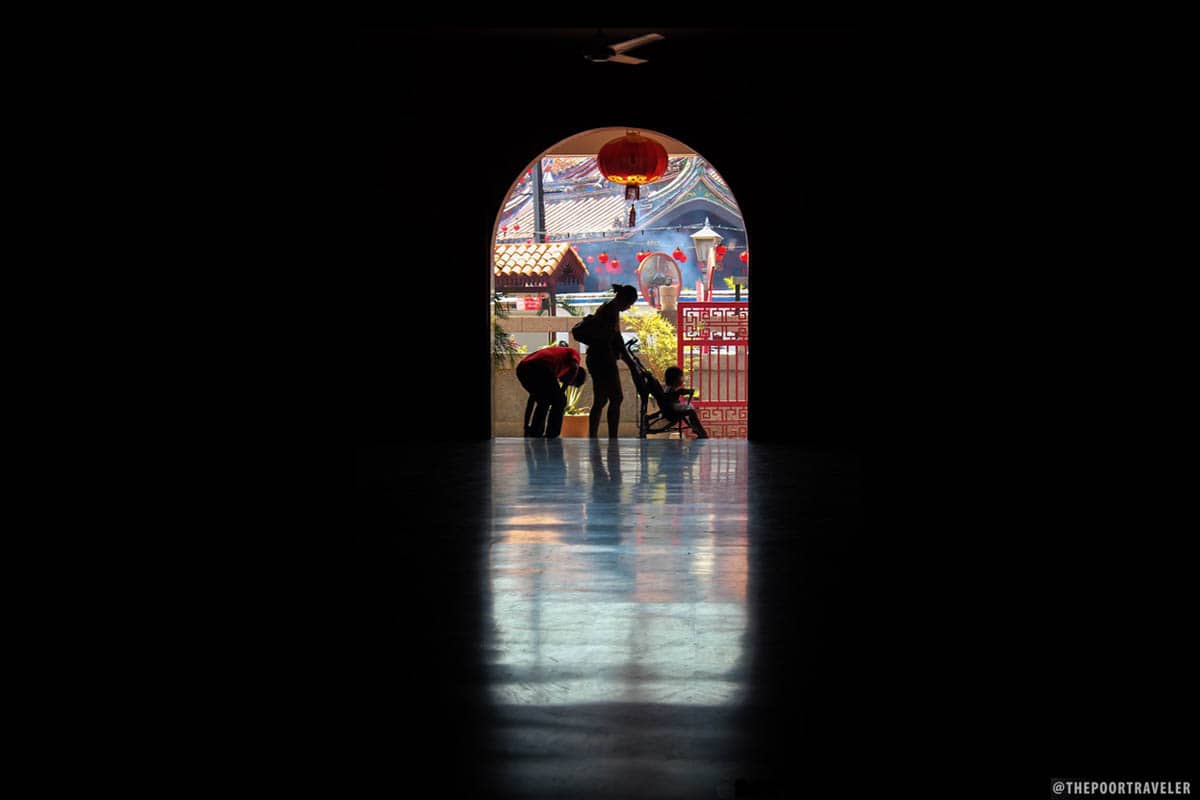
Perhaps to others, Xiang Lin Si Temple might be just another Buddhist Temple but it was more than that to me. The other temples that I had been to before were all too grand that I got lost in the visual spectacle and the architectural wonders that I failed to see what was inside and what they meant. It was only when I visited Xianglin Temple that I learned about the Eighteen Lohans, which before this visit I thought they were all just different versions of Buddha; the Future Buddha, which I used to refer to as the Fat and Happy One; and other important deities and figures. It may not share their belief and what I learned so far may be little but it’s a good start. After all, the first step in truly respecting and appreciating something new is understanding it.
Posted: 2012 • 8 • 19
You’ll find the summary of my SINGAPORE-MALACCA TRIP here with details on the budget and itinerary.
